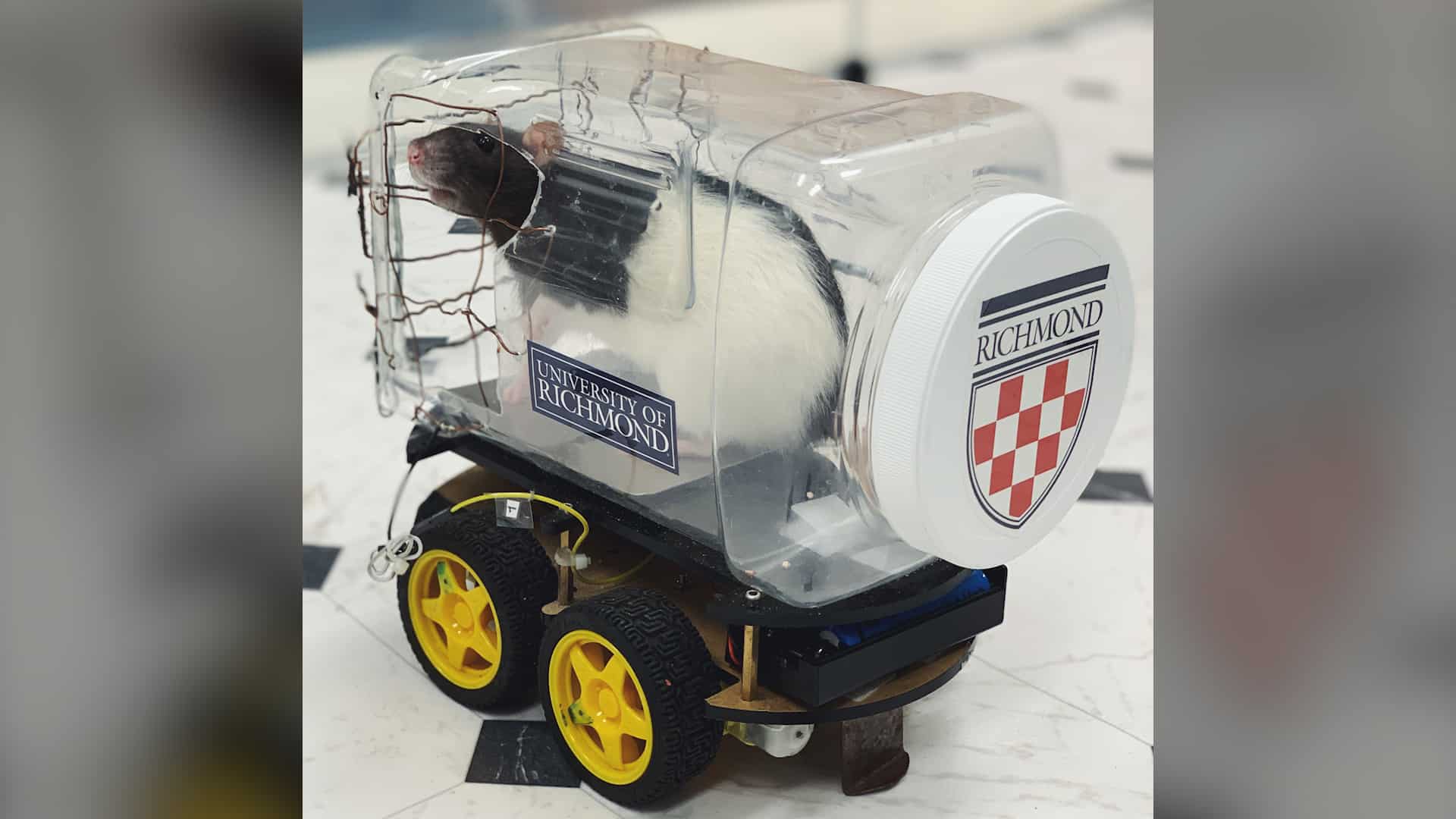via New Scientist ~ Rats have mastered the art of driving a tiny car, suggesting their brains are more flexible than we thought. The finding could be used to understand how learning new skills relieve stress and how neurological and psychiatric conditions affect mental capabilities.

We know that rodents can learn to recognize objects, press bars and find their way around mazes. These tests are often used to study how brain conditions affect cognitive function, but they only capture a narrow window of animal cognition, says Kelly Lambert at the University of Richmond.
Lambert and her colleagues wondered if rats could learn the more sophisticated task of operating a moving vehicle.
They constructed a tiny car out of a clear plastic food container on wheels, with an aluminum floor and three copper bars functioning as a steering wheel. When a rat stood on the aluminum floor and gripped the copper bars with their paws, they completed an electrical circuit that propelled the car forward. Touching the left, center or right bar steered them in different directions.
Six female and 11 male rats were trained to drive the car in rectangular arenas up to 4 square meters in size. This involved rewarding them with Froot Loop cereal pieces when they touched the steering bars and drove the car forward.
The rats were encouraged to advance their driving skills by placing the food rewards at increasingly distant points around the arena. “They learned to navigate the car in unique ways and engaged in steering patterns they had never used to eventually arrive at the reward,” says Lambert.
Learning to drive seemed to relax the rats. The researchers assessed this by measuring levels of two hormones: cortisol, a marker of stress, and dehydroepiandrosterone, which counteracts stress. The ratio of dehydroepiandrosterone to cortisol in the rats’ feces increased over the course of their driving training.
This finding echoes Lambert’s previous work showing that rats become less stressed after they master difficult tasks like digging up buried food. They may get the same kind of satisfaction as we get when we perfect a new skill, she says. “In humans, we call this self-efficacy or agency”.
In support of this idea, the team found that rats that drove themselves had lower dehydroepiandrosterone levels and were less stressed than rats that were driven around as passengers in remote-controlled cars.
The discovery that rats can drive cars demonstrates the “neuroplasticity” of their brains, says Lambert. This refers to their ability to respond flexibly to novel challenges. “I do believe that rats are smarter than most people perceive them to be and that most animals are smarter in unique ways than we think,” she says.
Researchers could potentially replace traditional maze tests with more complex driving tasks when using rat models to study neuropsychiatric conditions, says Lambert. For example, driving tests could be used to probe the effects of Parkinson’s disease on motor skills and spatial awareness or the effects of depression on motivation, she says. “If we use more realistic and challenging models, it may provide more meaningful data,” she says.
The team is now planning follow-up experiments to understand how rats learn to drive, why it seems to reduce stress, and which brain areas are involved.




